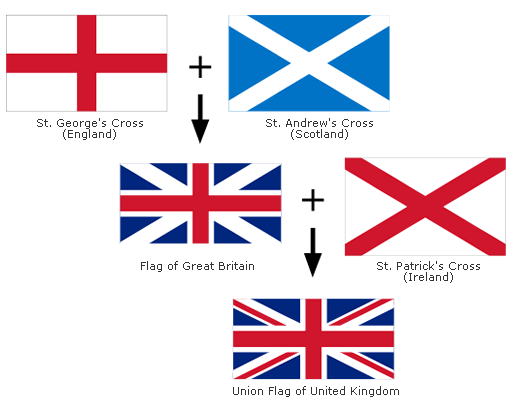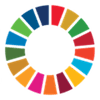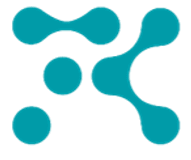Barcelona, 05.09.12 to 07.09.12
First of all, I have to thank Nicholas Ind for his great synthesis telling us what happened during the last Medinge Group meeting. Actually, this post is based on it!
Medinge with ESADE Alumni | Presentations
Hosted by Oriol Iglesias – ESADE Business School
Nikolaj Stagis | The authentic company
Nikolaj kicked off the event with his talk on authenticity. He argued that people are looking for purpose and meaning and that for companies, authentic identity drives the brand.
Nikolaj was keen to stress that authenticity was more than history and heritage, but also included purpose and actions and expression and communication.
As well as the concept of authenticity, there were also fascinating examples such as LEGO, Noma, BMW and Ducati.
His three main ideas were:
- People have become more sensitive and critical about identities
- A positive reputation is leaded by managing an authentic identity, and this means authenticity, consistency and transparency
- Authenticity is built through:
- Heritage: Legacy, ritual, founder, place, idea…
- Reflection: Who we are, radical, integrity, entrepreneur…
- Expression: Presence, Expression of emotion, staging heritage, use of artifacts…
Simon Paterson | Enough already!
Simon’s speech on “Enough” was very different. Contemplative and questioning in tone, Simon asked the audience to reflect on what was enough.
Do we need to consume to the extent we do? Could we make do with less? Where does real well-being derive from?
Simon didn’t attempt to offer easy solutions, but he made us all think, at individual level as well as collectively.
His three main ideas were:
- Start: Social habits of friendship; the strong ties
- Grow: Communal habits; the weak ties
- Endure: Leaders give participant new habits; a sense of identity and ownership
Enric Bernal | Organizational Energy
Enric’s got into businesses considering them as living systems which requires people to think about organizations in a new way, one that captures organizational energy not only for economic benefit but to also meet the needs of society and the environment.
His seven pillars for organizational energy:
- Community
- Wisdom
- Expression
- Cooperation
- Willpower
- Wellbeing
- Grounding
At the ESADE Boardroom | Presentations + Deep Discussions
Due to the absence of Stanley Moss, CEO & General Secretary of The Medinge Group, Erika Uffindell hosted the session.
Cristián Saracco | Stop the Train… Please!
Based on VUCA World (Volatile, Uncertain, Complex, Ambiguous) Cristián argued for the importance of focusing on people ““ who need an anchorage based on values, which drive certain behaviors.
Also, he presented an alternative to the traditional business cycle, “The Vowels”… AEIOU.
One of the interesting points here was that while we keep our values over time, the ordering and meaning of them changes depending on circumstances.
Cristián cited Ronald Inglehart’s worldwide research on values and how the responses have changed. Tribes are no longer defined so much by geography. Cristián also pointed out that you can map organizations/brands to value typologies.
Dmitry Petrov | Vassily Aksyonov
Dmitry looked at the writer, Aksyonov through the lens of personal brand management. He noted that people often buy books because of the personal brand, not the content of the book.
Aksyonov was very conscious of his image: “a writer is the author of texts, characters and images, including his own”. Actually, he expanded his audience beyond the geographical boundaries of the Soviet Union which, at that time, were closed (Nikita Khrushchev period)
The promotion of certain values was key to his brand. N.B.: consciously posing like Hemingway.
Sandra Horlings | Chiefs? Or Indians?
Sandra observed that brands need to interact with all stakeholders.
Brands can contribute to society and create a positive circular economy (3Rs’). She used the example of DyeCoo who now use no water in the dying process. Some companies such as Nike, Adidas are also branding the supply chain process.
What about the chiefs? Come from similar backgrounds and belief systems. Play by old rules. Focus on growth and believe that knowledge is power. Can these chiefs build new brands? Can we change our belief system? Yes, if we share and collaborate; new stakeholders want to participate and help develop long term and sustainable solutions.
Sandra also quoted this from Lewis Carroll:
“One day Alice came to a fork in the road and saw a Cheshire cat in a tree. Which road do I take? she asked. Where do you want to go? was his response. I don’t know, Alice answered. Then, said the cat, it doesn’t matter.”
Two other quotes from Sandra:
- Be the best, beat the rest
- You may go fast alone, but you can go far together
In the following discussion we debated the difference between revealing and positioning and argued that there was a fundamental problem with the concept of positioning. How to get alignment between reality and positioning? We need a new management tribe.
Sergei Mitrofanov & Dmitry Petrov | Sayonara Capitalism
The Russian Panel was Sergei and Dmitry double act, where they provoked us with some interesting questions.
They started with Gordon Gekko’s Greed is good speech from Wall Street and then asked three questions:
- Is there a new trinity in contemporary capitalism Branding people?
- Are you guilty too?
- What can the Medinge Group do?
Peter Brown | The nation as a brand
We have to confess we didn’t take many notes during Peter’s speech, not because we were dreaming about food but because it was so fascinating. We discovered what a Vexillophile is and learned about flags.
Peter took us through the history of the English, Scottish, Welsh and Irish flags noting that brand England’s flag is from 1096. He also showed how you can read the meaning of flags. He finished with a discussion of Brand Scotland and Brand England.
Some key points on his presentation: A flag represent…
- Belief
- Culture & Customs
- Characterize the citizens
- Funny little habits & rituals
- The way people speak language

Giuseppe Cavallo | Requiem for brand equity
Brand equity is an indicator of brand value and an asset. Guiseppe cited Zygmunt Bauman and his book liquid modernity which looks at the relationship between brands and the public.
He argued that Millennials trust their peers and distrust centralized authority. This impacts on relationships with brands. E.g.: Gap, McDonalds, Barbie. We live in a world of wiki-brands ““ a participatory process.
What really defines a brand’s value? Benefits, emotion, archetype. Emotional benefits create a bond between brand and public. The archetype connects beyond a personal level. The individual becomes part of something bigger ““ the benefits of association and participation. How should we nurture brand equity?
- Empathetic relationship with public
- Personal and meta-personal bond based on a vision… reduces volatility
- Wiki-ability… associate with the public and co-work with them
Magnus Sørdal | Social Media
Magnus had the last difficult slot, but he gave us an interesting perspective on social media, showing how it could be categorized in four different ways:
- Brand as a researcher ““ starting point for companies. Listening. Dell ““ learning from customers
- Brand as a conversationalist ““ two-way conversation
- Brand as a facilitator ““ more passive role. E.g.: eBay ““ group giving. Providing platform
- Brand as a Co-creator ““ more active role
Last but not least
Different points of view, different discussed issues, different approaches… Same reality, same focus… Not in the brands, but in people, our values and a promising vision for the future.








0 Comments